Keenan Granland
HOB-CNN: Hallucination of Occluded Branches with a Convolutional Neural Network for 2D Fruit Trees
Jul 28, 2022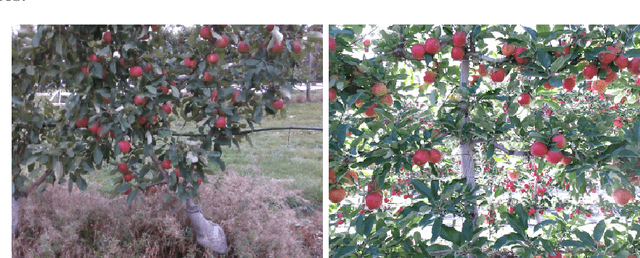


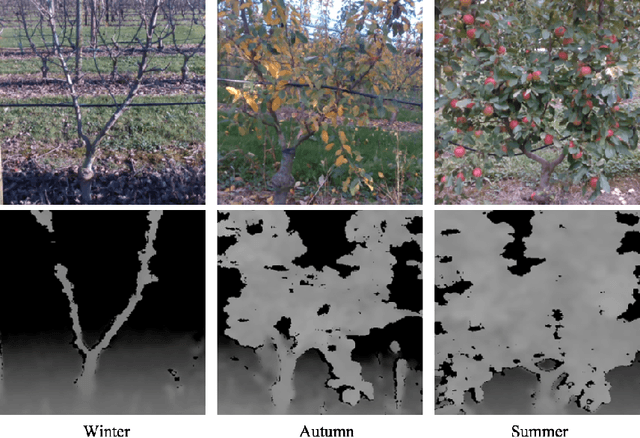
Abstract:Orchard automation has attracted the attention of researchers recently due to the shortage of global labor force. To automate tasks in orchards such as pruning, thinning, and harvesting, a detailed understanding of the tree structure is required. However, occlusions from foliage and fruits can make it challenging to predict the position of occluded trunks and branches. This work proposes a regression-based deep learning model, Hallucination of Occluded Branch Convolutional Neural Network (HOB-CNN), for tree branch position prediction in varying occluded conditions. We formulate tree branch position prediction as a regression problem towards the horizontal locations of the branch along the vertical direction or vice versa. We present comparative experiments on Y-shaped trees with two state-of-the-art baselines, representing common approaches to the problem. Experiments show that HOB-CNN outperform the baselines at predicting branch position and shows robustness against varying levels of occlusion. We further validated HOB-CNN against two different types of 2D trees, and HOB-CNN shows generalization across different trees and robustness under different occluded conditions.
Automated Iterative Training of Convolutional Neural Networks for Tree Skeleton Segmentation
Oct 16, 2020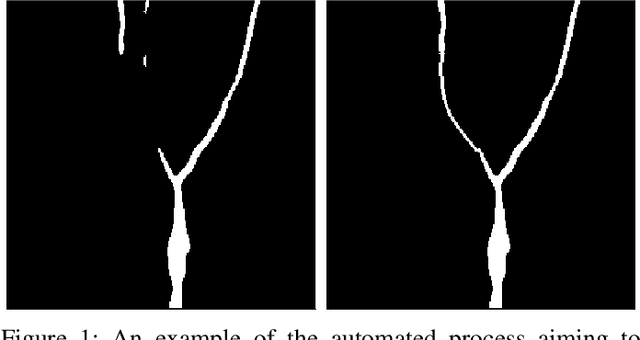
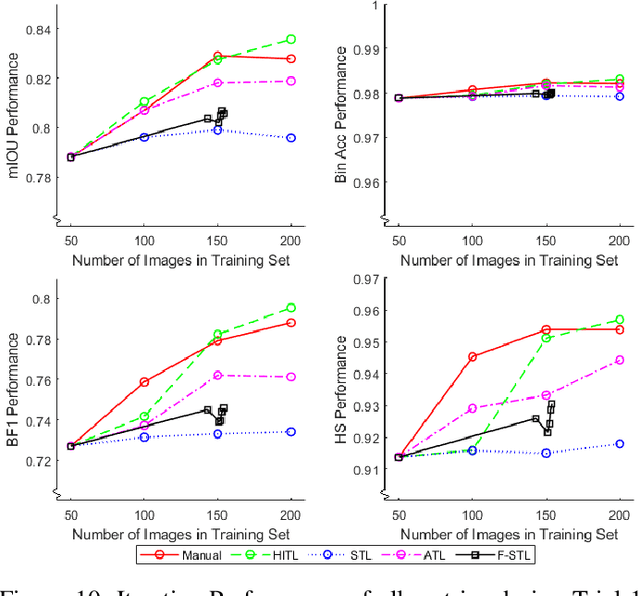

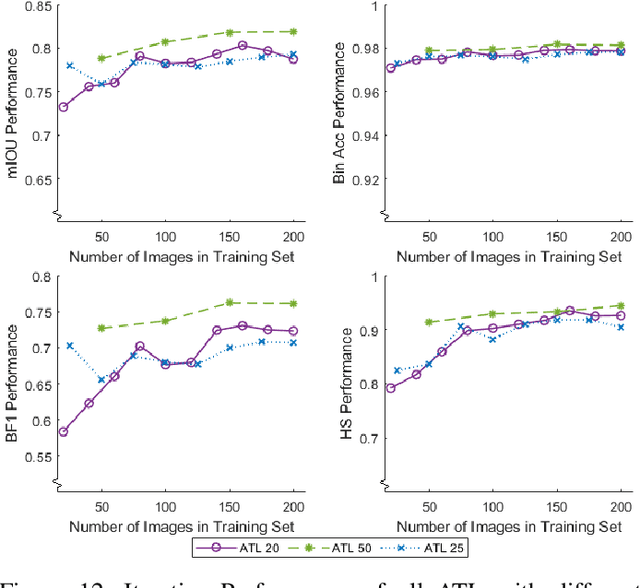
Abstract:Training of convolutional neural networks for semantic segmentation requires accurate pixel-wise labeling. Depending on the application this can require large amounts of human effort. The human-in-the-loop method reduces labeling effort but still requires human intervention for a selection of images. This paper describes a new iterative training method: Automating-the-loop. Automating-the-loop aims to replicate the human adjustment in human-in-the-loop, with an automated process. Thereby, removing human intervention during the iterative process and drastically reducing labeling effort. Using the application of segmented apple tree detection, we compare human-in-the-loop, Self Training Loop, Filtered-Self Training Loop (semi-supervised learning) and our proposed method automating-the-loop. These methods are used to train U-Net, a deep learning based convolutional neural network. The results are presented and analyzed on both traditional performance metrics and a new metric, Horizontal Scan. It is shown that the new method of automating-the-loop greatly reduces the labeling effort while generating a network with comparable performance to both human-in-the-loop and completely manual labeling.
 Add to Chrome
Add to Chrome Add to Firefox
Add to Firefox Add to Edge
Add to Edge